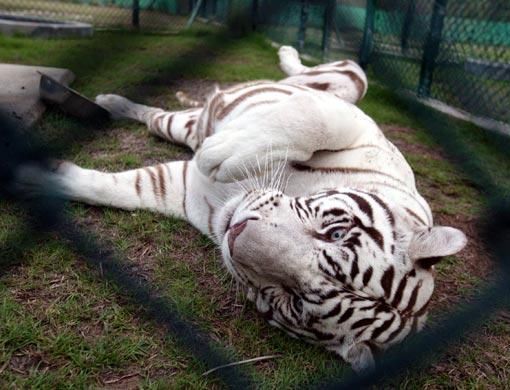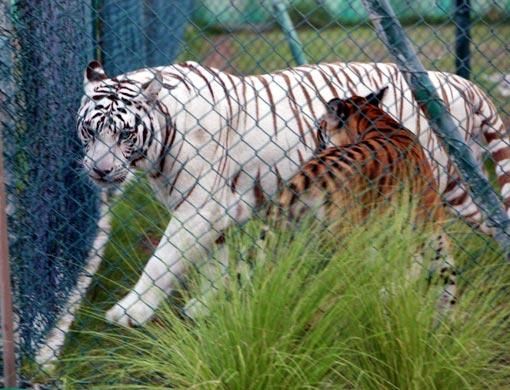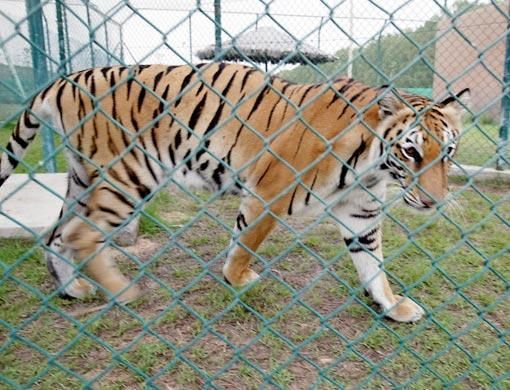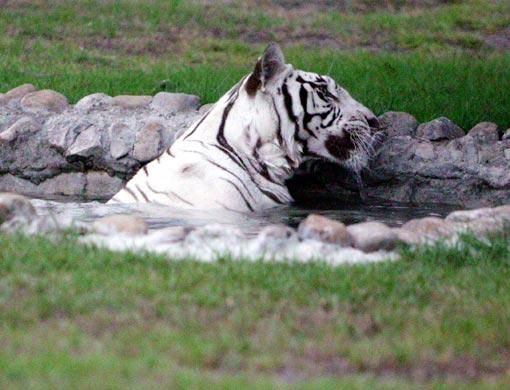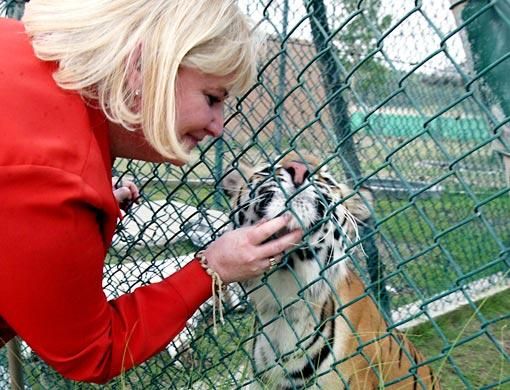Abu Dhabi: The romance just did not work out.
The lithesome female Bengal beauty just did not get along with the powerful suitor and finally, they went their separate ways.
A move to encourage captive breeding of Bengal tigers at the Abu Dhabi Wildlife Centre (ADWC) ended abruptly after a brief encounter between Maya, a three-year-old female Bengal tiger, and Caesar, a seven-year-old male albino Bengal tiger.
Maya and Caesar have been seeing each other for the past two months through a wired fence.
Ronel Smuts from the ADWC moved the tigers closer to each other, with the intention of breeding and adding to the tiger population in the UAE.
There are approximately 2,000 big cats remaining in the wild.
"Tigers are hunted across the world; they've become close to extinct. My whole objective was to get Maya and Caesar comfortable around one another. Female tigers reach maturity when they are about three years old, males a year or so later, which makes them a perfect match," said Ronel.
She has raised Maya since she was a two-week-old cub. "I hand-reared Maya and it warms my heart to know that she'll be able to meet up with a male tiger and have babies of her own. My baby is having babies, that just makes me so happy," said Ronel.
"Caesar is three times Maya's size and weighs 160 kilogrammes and Maya only 90 kg. He can kill her in a split second if we are not careful," said Ronel.
The male eats up to five kilos of meat a day. Maya is fed three kilos. Both tigers are kept without food for two days a week, as in the wild. "Tigers are not that active during summer and go without food for at least two days a week. So to simulate Maya and Caeser to their hunting habits, we don't feed them two days a week. Not to mention that we don't want them to put on weight, they don't move about as much as tigers in the wild," she said.
As soon as the gate between the two fences was open, the excited Maya rushed towards Caesar's cage and jumped on his back, which made him angry. "She was excited to be with him in one cage, the close-up experience made her react the wrong way. At first she was happy and submissive but after she felt his initial angry reaction, and became defensive," said Ronel.
After a slight misunderstanding both tigers were separated once again but this time in swapped cages. Caeser was placed in Mayas cage which is slightly larger in size. Maya seemed scared and took a corner.
"Caeser wanted to give her space at that point. He was even making that chuffing sound. Maya was on her toes, she didn't like the fact that Caeser was enjoying the facilities in her cage," said Smuts.
Maya isn't as experienced with natural behavior as Caeser is and for that purpose did not respond in a normal way, as a female tiger would. "She felt defensive. His reaction was normal. This is the first time I introduce tigers to each other. He's been with others before arriving to ADWC,," said Smuts, who was pretty nervous at that point.
It took Maya quiet sometime to cool off; meantime Caeser was calm. He occasionally explored his new cage, sniffed around and eventually cooled off in Maya's five-star look-alike pool. His eyes were the only part of his body that were apparent from a distance. He was observing Maya discreetly.
"Mr. Macho and Miss Nervous is what I would call those two right now," said Smuts with a chuckle. "She's irritated because he's in her territory and he's acting very cool. Even though this was a planned introduction, we had to split them. It will take time, I will keep on getting them together in intervals till they get used to being in the same cage and will closely observe how things go."
Facts about mating and cubs
- A tigress comes into estrus (heat) only seasonally
- Following mating, the gestation period for tigers is approximately 103 days
- The male tiger doesn't stay with the female after mating, and doesn't participate in raising the cubs
- The average litter size of tigers is two-three cubs (the largest is five)
- Once a tigress gives birth to cubs she will not come into estrus again until her cubs are from 1.5 to three years, with enough skills to being life on their own.


